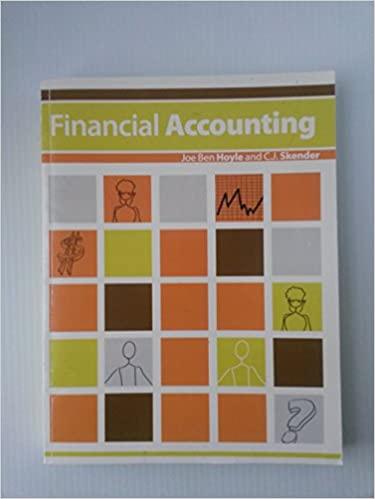


\begin{tabular}{|l|r|r|r|} \hline & \multicolumn{2}{c|}{ For years ended December 31} \\ \cline { 2 - 4 } & 2020 & 2019 & 2018 \\ \hline Acid-test ratio (CA-inventory-prepaid)/CL & 0.77 & 0.66 & 0.82 \\ \hline Current ratio (CA/CL) & 0.98 & 0.86 & 0.99 \\ \hline Debt ratio & 0.85 & 0.81 & 0.81 \\ \hline Earnings per share & 5.14 & 5.23 & 8.84 \\ \hline Inventory turnover & 8.47 & 9.32 & 9.39 \\ \hline Net income (\$ in millions) & $7,120 & $7,314 & $12,515 \\ \hline Accounts Receivables turnover & 8.67 & 8.98 & 9.05 \\ \hline Return on assets & 9.34% & 10.31% & 17.69% \\ \hline Operating income percentage & 14.32% & 15.32% & 15.64% \\ \hline Revenues (\$ in millions) & $70,372 & $67,161 & $64,661 \\ \hline Working capital (\$ in millions) CA-CL & (371) & (2,816) & (245) \\ \hline \end{tabular} Notes: Debt ratio =TL/TA Inv. TO=CGS/Avg. Inv. Acciounts receivable TO=SALES/Avg. AR Return on Assets =NI+{ Interest Expense * (1-Tax) }/ Avg TA Operating Income \%=operatinig income /SALES REVENUE Inventory Turnover, Receivables Turnover, Return on Assets figures for 2018 use ONLY 2018 values in the denominator as we don't have 2017 numbers to average Requirements 1. Using the financial data for the three years for The Coca-Cola Company discuss the company's: a. Ability to pay current liabilities; b. Ability to sell inventory and collect receivables; c. Ability to pay long-term debt; and d. Profitability. 2. Using the financial data for the three years for Pepsico, Inc., discuss the company's a. Ability to pay current liabilities; b. Ability to sell inventory and collect receivables; c. Ability to pay long-term debt; and d. Profitability. 3. Compare Coca-Cola's financial position to PepsiCo's financial position throughout the three years given. How do the two companies compare in the following areas? ability to pay current liabilities; b. Ability to sell inventory and collect receivables; c. Ability to pay long-term debt; and d. Profitability. 4. What conclusions can you draw from your analysis of the two companies? Which company do you think is in a stronger financial position? \begin{tabular}{|l|r|r|r|} \hline & \multicolumn{2}{c|}{ For years ended December 31} \\ \cline { 2 - 4 } & 2020 & 2019 & 2018 \\ \hline Acid-test ratio (CA-inventory-prepaid)/CL & 0.77 & 0.66 & 0.82 \\ \hline Current ratio (CA/CL) & 0.98 & 0.86 & 0.99 \\ \hline Debt ratio & 0.85 & 0.81 & 0.81 \\ \hline Earnings per share & 5.14 & 5.23 & 8.84 \\ \hline Inventory turnover & 8.47 & 9.32 & 9.39 \\ \hline Net income (\$ in millions) & $7,120 & $7,314 & $12,515 \\ \hline Accounts Receivables turnover & 8.67 & 8.98 & 9.05 \\ \hline Return on assets & 9.34% & 10.31% & 17.69% \\ \hline Operating income percentage & 14.32% & 15.32% & 15.64% \\ \hline Revenues (\$ in millions) & $70,372 & $67,161 & $64,661 \\ \hline Working capital (\$ in millions) CA-CL & (371) & (2,816) & (245) \\ \hline \end{tabular} Notes: Debt ratio =TL/TA Inv. TO=CGS/Avg. Inv. Acciounts receivable TO=SALES/Avg. AR Return on Assets =NI+{ Interest Expense * (1-Tax) }/ Avg TA Operating Income \%=operatinig income /SALES REVENUE Inventory Turnover, Receivables Turnover, Return on Assets figures for 2018 use ONLY 2018 values in the denominator as we don't have 2017 numbers to average Requirements 1. Using the financial data for the three years for The Coca-Cola Company discuss the company's: a. Ability to pay current liabilities; b. Ability to sell inventory and collect receivables; c. Ability to pay long-term debt; and d. Profitability. 2. Using the financial data for the three years for Pepsico, Inc., discuss the company's a. Ability to pay current liabilities; b. Ability to sell inventory and collect receivables; c. Ability to pay long-term debt; and d. Profitability. 3. Compare Coca-Cola's financial position to PepsiCo's financial position throughout the three years given. How do the two companies compare in the following areas? ability to pay current liabilities; b. Ability to sell inventory and collect receivables; c. Ability to pay long-term debt; and d. Profitability. 4. What conclusions can you draw from your analysis of the two companies? Which company do you think is in a stronger financial position









